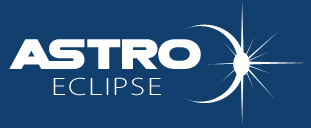OBSERVATION SITE LOCATION
30 28' 09.37" S
69 15' 19.52" W
Duration of Total Eclipse: 2m 30.5s (2m 27.3s lunar limb corrected)
Eclipse date: 02 July 2019
1st Contact 16:25:32.4 Altitude of sun +23.5
2nd Contact 17:39:32.1 Altitude of sun +11.7
3rd Contact 17:42:02.6 Altitude of sun +11.3
4th Contact 18:46:52.8 Altitude of sun -00.7
Sunset is at 18:45 - sunsets in eclipse
All times are local (UT/GMT -3)
Credit Xavier Jubier
WEATHER PROSPECTS
We wish to acknowledge to work of Jay Anderson and Jennifer West http://eclipsophile.com/ or their invaluable contribution and detailed analysis of Climatology and Weather for Celestial Events.

"Inland, beyond the reach of the low-level marine stratus cloud, the rugged terrain is both a good cloud manufacturer and a
The Andes Mountains form an impenetrable barrier to Pacific moisture except at the upper levels of the atmosphere. In contrast, the flat plains of central Argentina do not pose much of an obstacle to Pacific moisture and so weather systems are able to approach and envelope the eclipse track from the south and east. Fortunately, the Cuyo region is a long way from the Atlantic and moisture reaches the foothills from that direction only occasionally. This gives the Argentinian slopes of the Andes a small but especially favourable climate for eclipse observation.
All the available evidence - satellite and ground-level measurements - points to a location up against the eastern slopes of the Andes as having the best chances of seeing the eclipse. In particular, the small hamlets of Bella Vista and Iglesia (north of Bella Vista) lie on an open plain where satellite imagery promises the lowest average cloud amount anywhere along the track. Bella Vista lies only 33 km from the sizeable town of Rodeo and 80 km from the much larger San José de Jachal. The two communities have good visibility west toward the lowering Sun (11 high at mid-eclipse ) . July finds Bella Vista, San José de Jachal, and San Juan in the midst of their winter dry season with little precipitation in the month. Nights are cool because of the season and the altitude (1200m at Jachal; 1900m at Bella Vista), with temperatures frequently dropping below freezing and occasionally as low as -10C at Jachal.

Credit Jay Anderson and Jennifer West http://eclipsophile.com/




